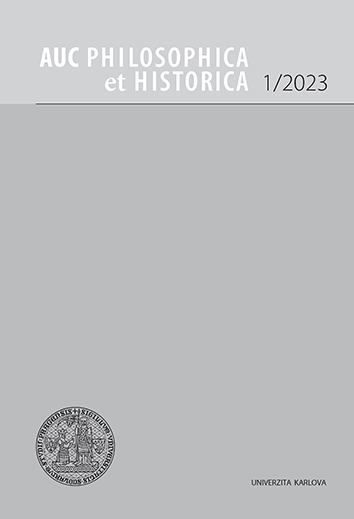AUC Philosophica et Historica je víceoborový akademický časopis zaměřený na humanitní a společenskovědné obory (filozofie, psychologie, pedagogika, sociologie, obecné, české a hospodářské dějiny, pomocné vědy historické a archivnictví, etnologie).
Časopis je indexován v databázích CEEOL, DOAJ a EBSCO.
AUC PHILOSOPHICA ET HISTORICA, Vol 2016 No 1 (2016), 125–146
Tah štětce u Van Gogha. Sémiotika, funkce, syntax
[Van Gogh’s brushstroke. Semiotics, function, syntax]
Jan Zachariáš
DOI: https://doi.org/10.14712/24647055.2016.23
zveřejněno: 26. 09. 2017
Abstract
This text focuses on the role of the brushstroke in Vincent van Gogh’s work. Van Gogh’s brushstroke technique draws on the tradition of European painting, spanning from Titian to Delacroix and the Impressionists, a tradition in which brushstroke played an important role. Van Gogh, however, was the first to make it an autonomous element in his paintings. European Post-Renaissance painting features tendencies which favored either colors or lines, with the contradiction between these two trends being essential for defining different principles in painting, and naturally in the brushstroke as well. Van Gogh’s prominent brushstroke represents a deliberate synthesis of the line and the color, thus bringing the line-color controversy to an end. Van Gogh’s brushstroke, however, also has its semiotic meaning. Constituting an artistic formula, an individual stroke can represent different objects, which makes it not only a medium, but also a sign. Van Gogh arranges brushstrokes to create an open system, which is capable of the unique rendition of the notion of time, or a moment in time through a semiotic syntax of strokes. This text presents an analysis of van Gogh’s individual works of art as well as his texts.
klíčová slova: Vincent van Gogh; brushstroke; paragone; semiotics; visual time
